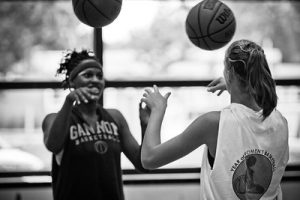 This is the 6th post in our series in our Definitive Guide to Improving Ball Handling be sure to check out the other episodes in the series … (Intro, Why and When to Dribble, Dribbling Mechanics, Mastering Skills, Measuring/Tracking Improvement) … There is an almost endless list of possible drills and combinations of drills out there. We provide a number of drills as a guide, but to the extent you create and develop new drills on your own, that is great! I think it shows a lot of creativity and development as players branch out from traditional drills and make their own. That said, we always like to provide some framework!
This is the 6th post in our series in our Definitive Guide to Improving Ball Handling be sure to check out the other episodes in the series … (Intro, Why and When to Dribble, Dribbling Mechanics, Mastering Skills, Measuring/Tracking Improvement) … There is an almost endless list of possible drills and combinations of drills out there. We provide a number of drills as a guide, but to the extent you create and develop new drills on your own, that is great! I think it shows a lot of creativity and development as players branch out from traditional drills and make their own. That said, we always like to provide some framework!
We look at all the different elements below (and more) and combine them into various drills:
Dribble
- Dribbling drills – drills that are done while dribbling the ball
- Non-dribble drills – drills that focus on handling the ball without dribbling (for example doing circles with the basketball around your waist
Movement
- Stationary drills – just like it sounds, these drills are done while standing still
- Moving drills – these include some sort of moving forward/backward/side-to-side while dribbling
- Full/Game speed – drills that intentionally push the ball handler to move as fast as possible, change speeds, etc.
# of Balls
Typically most drills are 1-ball or 2-ball…but some drills are done with 3 or 4+ balls
# of People
- By Yourself / Solo – these drills are done by just one person with no one else to help or interact with
- With a coach, partner or group – these drills incorporate others somehow. This could be someone trying to steal the ball from you or trap you. It could also have a coach or partner tossing you a tennis ball or another basketball as a part of your drill… or that coach or partner could be giving commands
Drill Category
This is where the list can get very long in terms of different drill categories. It is also important to know that most of the drills above the drill is either dribbling or not dribbling, but one drill can be in multiple categories. For instance, a drill can both develop hand-speed and utilize a tennis ball. The list below does not capture all the categories that are out there, but it starts to give you an idea:
- Coordination drills – these are done mainly to develop coordination of an athlete (being able to balance, maintain posture, move/jump and handle the ball at the same time
- Dribble speed / hand-speed / ball control – the focus here is on being able to dribble harder and faster as well as increasing the ability to control the ball better
- Tennis ball / Medicine ball – these drills utilize a tennis ball or medicine ball as an additional tool in the drill
- Practice dribble moves – these drills are dedicated to mastering a dribble move (ensuring the correct footwork, timing, body positioning, etc.)
- Cone or Ladder drills – these drills use agility ladders or cones as guides to require footwork or precise routes while dribbling
- Pressure and/or double team drills – these drills are to help players learn to better deal with defensive pressure (this requires a partner/coach/trainer)
- Obstacle or Challenge drills – some drills can get creative. Anything goes here. Sometimes we make players dodge a ball while dribbling. Sometimes we make them balance on one foot, sometimes we use resistance or other challenging elements like a plastic bag covering the ball. These drills are geared more for players that are close to mastering ball handling and need additional challenges.
Putting it together
As mentioned above, we combine these drills into useful and challenge drills for a player.
So you might have a drill that is a Dribbling Drill, Stationary, 1-ball, Solo, With a Tennis ball…The drill says you dribble a basketball with your weak hand and hold a tennis ball in your strong hand while standing still. You then throw the tennis ball in the air and while it is in the air you crossover dribble weak hand to strong hand and crossover back strong to weak then catch the tennis ball in the same hand that you threw it with.
You may also have a Dribbling Drill, Moving, 2-ball, Solo, Ball Control drill which is just dribbling the length of the floor and doing a 2-ball crossover at the foul line, half court, and opposite foul line.
Here are a few links to some of our ball handling drills
The point here is, there are a lot of combinations and no super firm rules. When we create a ball handling program we are very intelligent about putting together different combinations of drills to make sure we optimize the improvement of our players. But we also encourage all our basketball players to experiment with drills and create their own! If you think of any good ones be sure to comment on our Facebook page or our YouTube page!
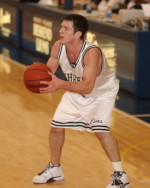 He has 25 years of experience playing basketball, training basketball players, and coaching basketball. The World of Hoops provides intelligent and intense basketball training to take basketball players to the next level.
He has 25 years of experience playing basketball, training basketball players, and coaching basketball. The World of Hoops provides intelligent and intense basketball training to take basketball players to the next level.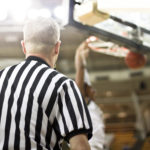 How to Deal With Basketball Referees – A guide for Players
How to Deal With Basketball Referees – A guide for Players The Pivot Foot – Which Foot to Use – Permanent vs. Switching
The Pivot Foot – Which Foot to Use – Permanent vs. Switching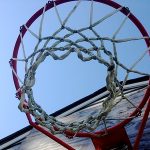 The Best Basketball Gifts and Products
The Best Basketball Gifts and Products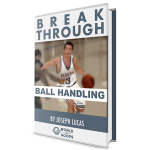 A Great Investment – Breakthrough Ball Handling
A Great Investment – Breakthrough Ball Handling




Speak Your Mind